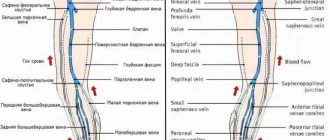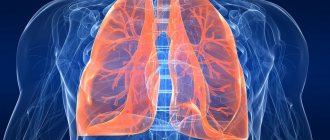Anatomy
Short review
The vagina is an elastic but muscular canal that is approximately 9-10 centimeters in length. The upper part of it connects to the cervix, which opens into the uterus, and the lower part opens to the outside of the body (in virgins, the entrance to the vagina is normally covered by the hymen). It lies between the urethra (which connects to the bladder) and the rectum. During sexual intercourse, the vagina lengthens, dilates, and fills with blood, preparing itself to better accommodate the penis. In addition, the vagina serves as an outlet for cervical mucus, menstrual blood and other secretions. During childbirth, the baby is pushed out of the uterus and out of the body through the vaginal canal by contraction of the muscles of the perineum and pelvis.
Vaginal walls
The thickness of the vaginal walls is 3-4 mm. They consist of several layers:
- External (adventitial membrane), represented by connective tissue with elastic and muscle fibers.
- Middle layer (smooth muscles, together with the muscles of the perineum, creates and maintains the so-called “vaginal tone”). The muscle fiber bundles are located predominantly in the longitudinal direction. In the upper part they connect to form the muscles of the uterus, and from the bottom they are directly woven into the muscle fibers located in the perineum.
- The inner layer (mucosa), consisting of stratified squamous epithelium, forms transverse folds, which, if necessary, allow this organ to stretch to the desired volume.
The walls of the vagina, together with the cervix, are constantly wet. The fact is that they are lined with secreting glands that produce the so-called cervical mucus. It prevents the proliferation of pathogenic bacteria and their penetration deep into the organs of the reproductive system. The volume of this secretion is small and practically imperceptible. When a woman begins to notice the appearance of uncharacteristic vaginal discharge (with an unpleasant odor, itching, discomfort), this is a good reason to go to the gynecologist and get tested!
External genitalia
1 – pubis; 2 – foreskin of the clitoris; 3 – head of the clitoris; 4 - labia minora; 5 - external opening of the urethra; 6 - hymen (is the border between the external and internal genital organs); 7 - Bartholin gland; 8 - anus; 9 — entrance to the vagina; 10 - labia majora.
Pubis
The pubis is an elevation located in front and slightly above the pubic joint, covered with hair, the upper limit of which grows horizontally (in men, hair growth extends upward along the midline).
Clitoris
The clitoris is a small (up to 1-1.5 cm), but very sensitive and important organ, consisting mainly of the corpus cavernosum. The male penis has a similar structure. The cavernous body has voids filled with circulating blood. During sexual arousal, these voids are intensely filled with blood, and the clitoris becomes enlarged and thickened—an erection. The corpus cavernosum is not capable of contracting like blood vessels, so traumatic injury to the clitoris is dangerous due to excessive bleeding.
Labia minora
The labia minora (LGB) are two folds of skin between the labia majora and the opening of the vagina. In front, connecting, they form the foreskin of the clitoris. Normally, the labia minora protrude slightly beyond the boundaries of the major lips, their color varies from pale pink to dark brown in the posterior regions. MPGs have a large number of vessels and nerve endings and are an ergenic zone; during sexual arousal, they increase in size due to blood flow.
PGMs are variable in shape and size, and are often asymmetrical. If the shape and size of the labia minora cause physical or mental discomfort, surgical correction of their size and the shape of the labia minora are performed.
sex slit
The genital fissure is the space between the labia majora and labia minora.
Labia majora
The labia majora (LGB) are two pronounced longitudinal folds of skin located on the sides of the genital slit. Anteriorly, the BPG converge into the anterior commissure, located above the clitoris. Behind, narrowing and converging one on the other, the BPG pass into the posterior commissure. The skin of the outer surface of the GPG has hair and contains sweat and sebaceous glands. The thickness of the labia majora contains blood vessels, nerves and Bartholin glands. On the inside they are covered with thin pink skin similar to a mucous membrane.
There are two openings under the labia majora and minora. One of them, with a diameter of 3 - 4 mm, located just below the clitoris, is called the external opening of the urethra (urethra), through which urine is discharged from the bladder. Directly below it there is a second hole with a diameter of 2 - 3 cm - this is the entrance to the vagina, which covers (or once covered) the hymen.
External opening of the urethra
The external opening of the urethra has a round, semi-lunar or star-shaped shape, it is located 2-3 cm below the clitoris. The urethra is 3-4 cm long, its lumen stretches to 1 cm or more. Along its entire length it is connected to the anterior wall of the vagina. On both sides of the external opening of the urethra are the excretory ducts of the paraurethral glands. These formations produce a secretion that moisturizes the mucous membrane of the external opening of the urethra.
Bartholin glands
Bartholin's glands (glands of the vestibule of the vagina) are paired, oblong-rounded formations, the size of a bean. They are located on the border of the posterior and middle third of the labia majora and produce a whitish secretion with a specific odor. The secret moisturizes the mucous membrane and has antibacterial properties.
Vaginal vestibule
The vestibule of the vagina is an anatomical formation. The “bottom” of the vaginal vestibule is the hymen or its remnants. In front, the vestibule is limited by the clitoris, behind - by the posterior commissure, on the sides - by the labia minora.
Hymen
The hymen (hymen) is the thinnest ring-shaped or semi-lunar-shaped membrane, 0.5 - 2 mm thick. With the onset of sexual activity, the hymen is torn. The hymen is the boundary between the external and internal genitalia.
Crotch
The perineum in the anatomical sense is the area between the pubis and the top of the coccyx, on the sides limited by the ischial tuberosities of the pelvic bones, in fact it is the exit from the small pelvis. In a clinical (obstetric) sense, the perineum is considered the area between the posterior commissure of the labia majora and the anus (Fig. 1). On the skin of the perineum there is a pigment line running from the posterior commissure to the anus - the perineal suture. The distance from the posterior commissure to the anus is called the perineal height and is 3-4 cm.
Rice. 1.
Anatomical landmarks of the female perineum: 1 - anterior commissure of the labia majora, 2 - posterior commissure of the labia majora, 3 - anus (anus), 4 - apex of the coccyx, 5 - ischial tubercle (on the left).
The thickness of the perineum consists of the skin, muscles, their tendons and fascia. The set of soft tissues occupying the space of exit from the small pelvis forms the pelvic floor or pelvic diaphragm. A woman's urethra, vagina, and rectum pass through the pelvic diaphragm.
The muscles and ligaments of the pelvic floor support the pelvic organs (bladder, vagina and rectum) in an anatomical position and provide a number of very important physiological functions: voluntary urination and urinary retention, defecation, retention of feces and intestinal gases, closure of the vaginal opening, are part of labor paths (Fig. 2).
Damage to these structures during childbirth leads to insufficiency of the perineal muscles and disruption of the pelvic organs - pelvic floor dysfunction, sexual dysfunction. This is written in detail in this article.
Rice. 2.
Sagittal section of the pelvic floor
What functions does the vagina have?
- Sexual - participation in the process of fertilization. The main function of the vagina is to participate in the process of conceiving children: seminal fluid flowing from the man’s penis during intimacy enters the vagina, from where sperm penetrate the uterus through the tubes. First, sperm accumulates in the posterior, deepest, vaginal vault, which borders the cervix.
- Barrier - protects the internal genital organs from germs. The vagina has an important ability, in particular, to cleanse itself or regulate the stability of its flora. This process is regulated by female hormones - estrogen and progesterone, secreted by the ovaries. Under the influence of estrogen, cells in the vaginal mucosa synthesize glycogen, a substance that is then converted into lactic acid. The process of producing lactic acid from glycogen occurs with the participation of lactic acid bacteria (Doderlein bacillus), while the normal vaginal environment maintains an acidic environment (pH in the range of 3.8 to 4.5).
- Participation in childbirth is part of the birth canal during natural childbirth. The vagina, together with the cervix, forms the birth canal through which the baby leaves the uterus. During pregnancy, vaginal tissue changes under the influence of hormones, its walls become more elastic and can stretch enough to smoothly bring the fetus into the world.
- Excretory - releases vaginal and menstrual secretions into the environment. A healthy woman's vagina produces up to 2 ml of excretion per day, but the amount of fluid can vary depending on the phase of the menstrual cycle.
Structural features
Throughout your life, your vagina may look and feel different. To keep your vagina healthy, it is important to understand its anatomy and functioning, as well as what happens there at different times in a girl's life.
- The size of a woman's vagina in an aroused state changes, as does the size of a man's penis before and during an erection. During sexual arousal, the cervix moves deeper, making the vagina longer and more spacious in structure;
- The walls of the vagina are very elastic formations, which in a sexually mature female are quite stretchable; in an unexcited state, friction causes discomfort in a woman;
- In a non-excited state, the depth of the vagina in most women is 8-11 cm, the diameter is no more than 3.0 cm. In the excited state, the depth reaches 15-18 cm, the diameter of the vagina is up to 6-7 cm. In some women, after appropriate preparation, the structure of the vagina changes - its depth can reach 23 - 25 cm, diameter - 10 cm or more.;
- In medicine there is a term “vaginal accommodation”. It means that with constant sexual contact with the same man, the woman’s vaginal dimensions adjust to the parameters of his penis;
- In 85-90% of cases, the size of a woman's vagina is directly proportional to its height. In short patients, the vaginal size is smaller than in tall representatives of the fair sex. However, there are frequent exceptions to this rule;
- Throughout life, the length and volume of the vagina can change. This usually occurs due to events such as childbirth and abortion, as well as hormonal imbalances, significant physical activity and age;
- The inner walls of the vagina, contrary to popular belief, have very low sensitivity. Less than 15% of women are able to feel a touch to its walls. Therefore, many therapeutic and diagnostic procedures in a gynecologist’s office do not cause significant discomfort. But it can hurt for completely different reasons (see here).
Vagina from 0 to 18+
In newborn girls, the length of this body is only 3 cm. Its walls fit tightly to each other. All this is due to the fact that the pelvic muscles of little girls are still very weak. Over about 1 year of life, the length of the vagina increases by about 1 cm. Only by 8-10 years can the so-called folding, which is characteristic of any female vagina, be detected in this organ. It is thanks to it that the size of the organ changes during childbirth, as well as during sexual intercourse. The greatest increase in the size of the vagina in a virgin begins at about 10 years old, and by 12-13 years it reaches an average of 7-8 cm.
Microflora of the vagina of girls
Immediately after a girl is born, her vagina is sterile. Only 3-4 hours after birth are lactobacilli, bifidobacteria and other microorganisms found there. At about 9-10 years of age, the puberty phase begins in girls. Starting from this period, girls begin to experience mucous discharge. They are usually clear, odorless and non-disturbing. The composition of the microflora also changes: in 60% of cases, lactobacilli are detected, the vaginal environment becomes acidic, the pH is 4 - 4.5. From adolescence (16 years +), the vaginal microflora in teenage girls becomes the same as in adult women.
How does the vagina change with the onset of puberty?
With the onset of puberty (18+), this organ becomes longer and wider. Thus, the body prepares to perform the main function of the reproductive system - reproduction. If we talk about what features a virgin’s vagina has, then its structure has, perhaps, the only feature - the hymen. It is this mucous septum that protects the internal genital organs from the external ones and prevents the penetration of pathogenic microorganisms into them. During the first sexual intercourse, this formation ruptures, which is often accompanied by a small amount of blood. If we talk about what the entrance to a virgin’s vagina looks like, then, as a rule, it is smaller than that of women who regularly have sex.
Vagina at 20 - 30 years old
Your years from approximately 18 to 30 are some of the best years of your vagina's life, mainly due to the peak of the sex hormones estrogen, progesterone and testosterone. Estrogen is responsible for keeping your vagina well moisturized and lubricated, the walls elastic, and the internal environment optimal in terms of acid-base balance.
During this age period, a woman’s vagina cleanses itself. Hormonal changes during the menstrual cycle affect the amount and composition of discharge that is constantly produced by this intimate area. Unless you have symptoms such as pain during sex, private itching, foul-smelling discharge or burning, your vagina does not require any maintenance other than daily external washing with mild soap and water.
Vagina from 30 to 40 years
One of the most noticeable vaginal changes in women after age 30 is a decrease in pelvic floor strength. Because the pelvic muscles support the bladder, uterus, and bowels, a variety of problems like urinary incontinence (especially when you sneeze, cough, or laugh), and even prolapse (when the uterus, bladder, or bowel slips out of place) can occur when the muscles The pelvic floor loses its strength with age. Vaginal birth may worsen these symptoms.
After previous childbirth, your vagina may lose some of its elasticity and stretch more than usual. Over time, most vaginas usually return to almost their prenatal size. Kegel exercises and special exercise machines can help strengthen the pelvic floor muscles and restore vaginal tone. To maintain health, regular medical examinations with a gynecologist are recommended.
Vagina from 40 to 50
Thanks to perimenopause (that period of time between about 43 and 47 years of age, just before your menstrual bleeding stops), your vagina goes through significant changes.
Levels of the hormone estrogen decrease, the vaginal walls become thinner and drier, the labia minora may become stretched, and the labia majora may become flabby and wrinkled. Irregular menstrual cycles, vaginal dryness, and hot flashes may occur. And although menopause may be looming ahead, some women give birth during this decade. Essentially, your 40s may mark the end of both your fertility and the end of your ability to conceive. This is known as vaginal atrophy and is accompanied by the following symptoms:
• vaginal burning • vaginal redness • painful sex • vaginal discharge • vaginal itching • burning during urination • shortening of the vaginal canal • increased risk of STDs
Regular intimate life, mostly with orgasms, helps slow the progression of vaginal atrophy by increasing blood flow to the vagina and keeping it elastic. In the absence of more or less regular sex, a good option for preventing blood stagnation in the internal genital organs would be a special therapeutic and preventive massage of the pelvic organs. Vaginal moisturizers or the use of estrogen cream may also help combat vaginal dryness. If you prefer the natural route, olive oil and coconut oil can help keep your vagina hydrated.
Pubic hair may thin or turn gray by the end of your fourth decade.
Questions and answers about the vagina
1. Does the vagina inherently smell bad? Odors may change depending on the day of the menstrual cycle, under the influence of medications or eating habits. Eating garlic, onions, broccoli, asparagus, white cabbage, spices, red meat, and blue cheese adds unique nuances to the vaginal aroma. But in any case, a healthy vagina does not smell like rotten fish or milk that went sour a few days ago.
2. Is discharge normal? They are a natural phenomenon for the female body. Consist of cervical mucus and vaginal secretions. Their intensity, character and consistency depend on the phase of the cycle. Normally, they can be transparent, whitish, watery, viscous... If vaginal discharge acquires a cheesy consistency, smells unpleasant, turns yellowish, grayish or greenish, or has blood in it, this is a good reason to immediately go for a consultation with a gynecologist and get tested.
3. Are expensive lingerie the key to vaginal health? The best choice for maintaining vaginal health is underwear that contains cotton. It allows air to pass through well and absorbs moisture, which reduces the risk of dysbacteriosis and fungal infections.
4. Does the vagina need “scented soap” and periodic “cleaning”? The female vagina is a self-cleaning system that does not require additional hygiene procedures such as douching, lathering with intimate gels or wiping with antibacterial wipes. Such activities disrupt the unique balance of beneficial microflora and create the preconditions for the proliferation of pathogenic microbes.
5. The more sex, the wider the vagina and vice versa? The size of your vagina does not depend on the number of sexual acts in your life. After a long break, a feeling of “tightness” in the vagina may arise from loss of the habit of intercourse or inability to relax.
6. Will the vagina necessarily tear during childbirth? Up to 80 percent of vaginal births involve tearing or require an incision. If there is a risk of rupture of the vaginal opening and to facilitate passage of the fetal head, obstetricians prefer to make an incision (called an episiotomy). It is indicated when, for example, the baby is positioned feet first or labor should go faster. But don't be scared! Your vagina is elastic and, thanks to its abundant blood supply, actually heals faster than other parts of the body.
7. What is point “A” in “that” place? The anterior vestibule, or “A spot,” is a small area of the vagina that is located deeper along the front wall of the vagina than the G spot. According to some overseas research, stimulating your A spot is an easy way to create more lubrication in the vagina. Moreover, 15 percent of study participants achieved orgasm within 10 to 15 minutes of A-spot stimulation.
Internal genital organs
The internal genital organs are located in the pelvic cavity and are fixed there by muscles, ligaments and connective tissue fascia.
1- vagina. 2- cervix. 3- uterus. Uterine appendages: 4- fallopian tubes. 5- ovaries.
Vagina
The vagina is an easily extensible muscular organ, which is a tube 7–8 cm long. In the upper part, the vaginal walls are attached to the cervix. The vagina has anterior and posterior walls, which are bordered by the bladder, urethra and rectum.
Uterus
The uterus is a hollow, pear-shaped muscular organ consisting of two parts: the body and the cervix. The body of the uterus is “suspended” in the center of the pelvis. In front of it is the bladder, behind it is the rectum. The figure shows that in cross-section the uterine cavity is a triangle, with its apex facing downwards. There are two holes in the upper corners - left and right. These are the openings of the fallopian tubes. Through the orifice, the uterine cavity is connected to the fallopian tubes, and through them to the abdominal cavity.
The walls of the cavity are lined with a layer of mucous tissue - the endometrium. During the first half of the menstrual cycle, under the influence of sex hormones, the endometrium is prepared to receive a fertilized egg, but if fertilization does not occur, the uterine lining is rejected. This process is accompanied by bleeding - menstruation. The uterus is essentially a receptacle for fetuses. It is here that a fetus develops from a fertilized egg.
Pathological formations of the uterine cavity (polyps, fibroids, adhesions, etc.) disrupt the physiological processes of embryo implantation, leading to infertility and miscarriage. Pathological formations of the uterine cavity are removed by hysteroscopy.
Cervix
The cervix of the uterus (c.m.) has a cylindrical shape (for those who have not given birth, it is conical) and partially protrudes into the vagina (the vaginal part of the c.m.). In the center of the cervix there is a spindle-shaped canal - the cervical canal (cervical canal). The upper end of this canal opens into the uterine cavity - the internal os. The lower opening opens into the vagina - the external os. The cervical canal connects the vagina and the uterine cavity.
The mucous membrane of the cervical canal has glands that secrete viscous mucus, which is a mucus plug. Cervical mucus is a barrier to “biological debris” (the bodies of dead cells, bacteria, etc.) into the uterine cavity. During childbirth, the vagina, together with the cervical canal, forms the birth canal through which the fetus moves outward.
The cervix is fixed in the pelvic cavity due to the ligamentous apparatus: uterosacral and cardinal ligaments. The pubocervical and rectovaginal fascia are attached to it - supporting structures for the walls and vaults of the vagina, bladder and rectum. Damage to the ligamentous apparatus leads to prolapse of the pelvic organs - pelvic organ prolapse.
The fallopian tubes
Fallopian tubes (t.t.) are paired, hollow muscular formations, about 13 cm long. The end of the tubes adjacent to the ovary expands in the form of a funnel with fringed edges. The inner surface of the pipes is covered with mucous tissue having cilia. The cilia are in constant motion and, together with the peristaltic contractions of the tube itself, help the egg move from the ovary to the uterus. Thus, the main function of m.t. – transport.
Ovaries
The ovaries (there are two of them: left and right) are the gonads. The ovaries are located on the sides of the uterus and are in contact with the fimbriae of the fallopian tubes. The main function of this gland is the production of eggs and sex hormones. From birth, they contain a huge number of follicles - microscopic vesicles with eggs.
At the beginning of the menstrual cycle, in one of the ovaries (rarely in two), simultaneously 25-40 follicles begin to increase in size and fill with fluid - “ripen”. Only one of them will ripen, rarely two.
Under pressure from the enlarging follicle, the thinned wall of the ovary tears, the follicle bursts, and the egg exits to the fallopian tube. If circumstances are favorable, sperm are waiting for her here. The fusion of the egg with the sperm occurs - fertilization, and then it is transported through the tube into the uterine cavity. Read more about this here.
Unlike men, whose abdominal cavity is isolated from the external environment, in women, sperm can enter the abdominal cavity through the genitals.
Unfortunately, pathogenic microbes penetrate there in the same way, causing inflammatory processes not only in the genitals, but also in the abdominal cavity itself. As a result, complications can develop, ranging from infertility to organ loss.
The best prevention of such situations is the use of a condom (barrier method of contraception), a regular sexual partner and preventive examination of the married couple for sexually transmitted diseases (STDs).
Mammary gland
Mammary glands (m.g.), paired skin formations on the anterior surface of the chest. In the center of the gland there is a nipple around which there is a circle of pigmented skin - a halo. The gland consists of lobules of glandular tissue with milk ducts (canals) and adipose tissue. The channels, connecting with each other, form excretory ducts that open on the nipple of the mammary gland. The growth of the mammary glands and their secretory function are activated by hormones of the ovary and pituitary gland.
The final development of m.f. occurs only after feeding a newborn. Breastfeeding is a powerful prevention of breast cancer, and the period of breastfeeding should last at least 8 months. At this age, the child begins to be given his first complementary foods.
Vaginal health
The female vagina is an amazing organ in every sense. It plays a role in sexual pleasure and is capable of giving birth to life. However, as you age, your vagina will change too. Having an aging vagina doesn't have to be a negative experience. Some women come to love their vaginas more than ever as they get older. For example, at 45-50+ you can feel more free during sex, due to the absence of the risk of unwanted pregnancy. And because with age comes wisdom, you may also feel more comfortable in your own skin and with your vagina.
During the period of age changes
You can't prevent every effect of aging on your vagina, but you can support it with some loving care and proper care and keep it as healthy as possible. Vaginal health can be maintained by following simple recommendations:
- undergoing regular gynecological examinations, including cervical screening,
- in situations of potential risk, we practice only “safe” sex,
- We regularly perform Kegel exercises at any age,
- We do not use douches, scented vaginal deodorants or vaginal cleansers.
What's good for a healthy vagina?
Follow these tips to reduce your risk of disease and maintain your vaginal health:
- Avoid unnecessary douching. The vagina naturally cleans itself. Douching can disrupt the natural balance of bacteria and fungi, which leads to the development of dysbiosis and vaginal infection.
- Avoid scented soaps and hygiene products. Perfumes in scented hygiene products such as soaps, pads and wipes can irritate the skin in the intimate area and disrupt the pH balance in the vagina. Choose products without strong odors.
- Be sexually responsible. Always use barrier protection (condom) with new partners and get tested for STIs regularly.
- Learn about Kegel exercises. They help strengthen the pelvic floor muscles, which can help reduce the risk of vaginal prolapse and pelvic floor weakness, as well as improve the sensation of intimacy.
- Get the Gardasil HPV vaccine. Ask your doctor about vaccination against viruses that can be sexually transmitted.
- Have regular medical examinations with a gynecologist. See your doctor for regular smear tests, screening for cervical cancer and HPV types.









